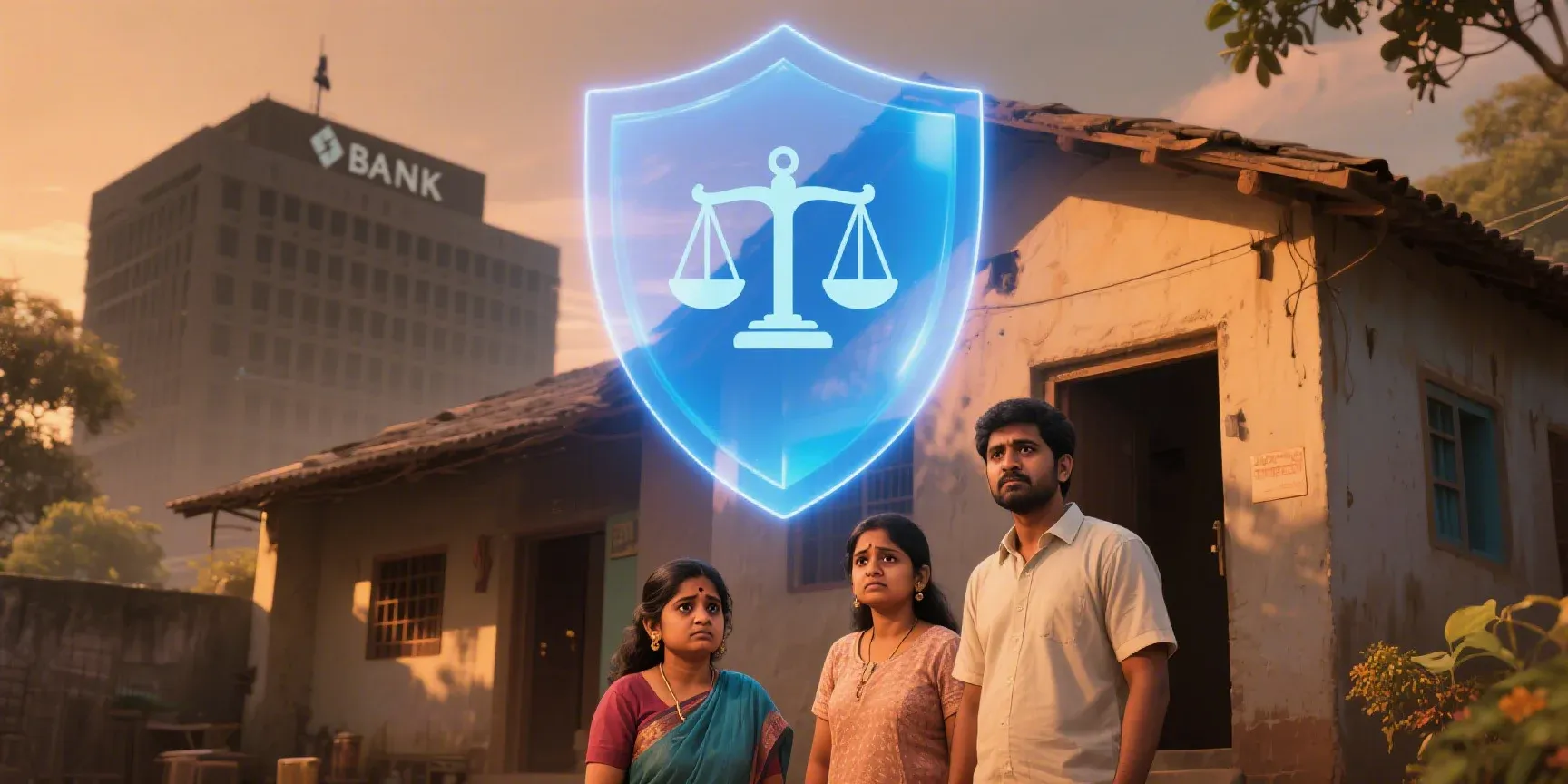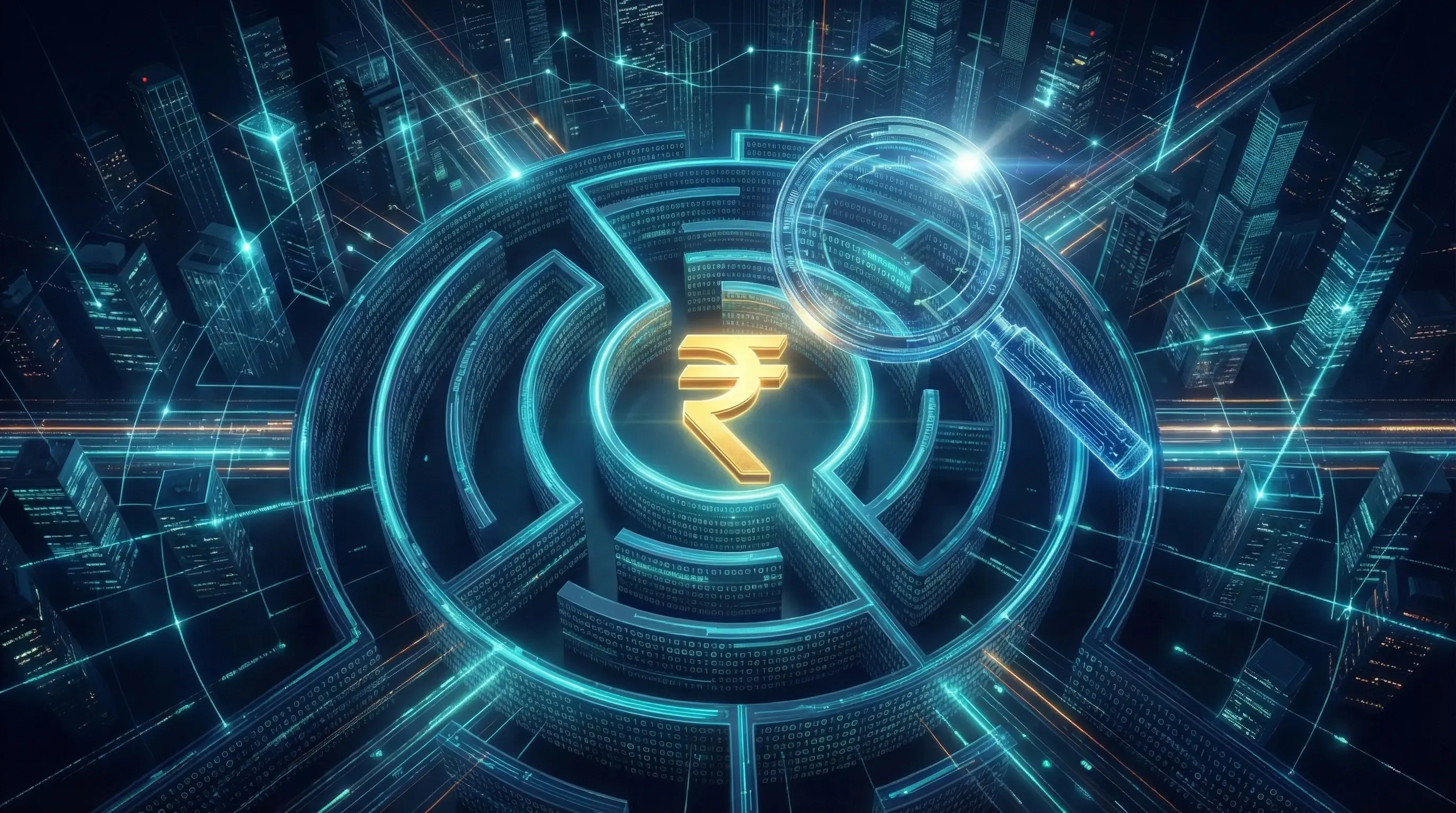
The SARFAESI Act, 2002: A Comprehensive Guide to Debt Recovery and Borrower Rights in India
This definitive guide to the SARFAESI Act, 2002, explains the complete debt recovery process for banks, from issuing a Section 13 notice to taking possession of assets, while detailing the crucial appeal rights and legal protections available to borrowers.
In the landscape of Indian financial regulation, few laws have been as impactful and transformative as the Securitisation and Reconstruction of Financial Assets and Enforcement of Security Interest Act, 2002, more commonly known as the SARFAESI Act. Enacted to address the escalating crisis of Non-Performing Assets (NPAs) that plagued the Indian banking sector, this legislation armed financial institutions with a powerful mechanism for speedy debt recovery, fundamentally altering the dynamics between lenders and borrowers.
The SARFAESI Act’s full form itself reveals its three core pillars: (1) Securitisation, (2) Reconstruction of Financial Assets, and (3) Enforcement of Security Interest. It provides a legal framework that allows banks and other financial institutions to take possession of and auction residential or commercial properties to recover outstanding loans from defaulting borrowers, significantly without the intervention of the courts. This guide offers a detailed analysis of the SARFAESI Act, 2002, exploring its objectives, procedures, the rights it confers upon borrowers, and its interplay with other critical laws, all shaped by landmark judicial pronouncements.
Chapter 1: The Genesis and Objectives of the SARFAESI Act
The journey to the enactment of the SARFAESI Act began in the backdrop of a struggling banking system. Before 2002, the loan recovery process was notoriously slow, mired in the lengthy procedures of civil courts. This often resulted in public money getting locked in unproductive assets, hindering economic growth. The Central Government, recognizing the urgent need for reform, established expert committees, including the Narasimham Committees I and II and the Andhyarujina Committee, to examine the state of the banking sector.
A key recommendation from these committees was the creation of a new legal framework to empower banks to recover their dues more effectively. This led to the birth of the SARFAESI Act, 2002, with the primary objectives to:
- Enable Speedy Recovery: To provide a fast-track, non-judicial mechanism for banks and financial institutions to recover their NPAs.
- Reduce Non-Performing Assets (NPAs): To clean up the balance sheets of banks by facilitating the resolution of bad loans.
- Regulate Securitisation and Asset Reconstruction: To create a formal and regulated market for the trading of secured assets and for the specialized management of distressed assets.
- Empower Creditors: To allow secured creditors to take possession of and sell collateral without court intervention, a significant departure from the previous regime.
The Act applies to secured loans where the outstanding amount is above ₹1 lakh and the loan account has been classified as an NPA. However, it does not apply to loans where the remaining debt is less than 20% of the original principal and interest.
Chapter 2: The Three Pillars of the Act Explained
The SARFAESI Act’s full name points to its multi-faceted approach to tackling bad loans. While the enforcement of security interest is its most visible feature, securitisation and asset reconstruction are equally vital components.
Pillar 1: Securitisation
Securitisation, as defined under Section 2(1)(z) of the Act, is a financial process where a bank or financial institution pools together its various financial assets (like home loans or car loans) and converts them into tradable securities. These securities are then sold to qualified buyers (QBs), which are typically other financial institutions, insurance companies, or mutual funds.
This process allows the originating bank to transfer the risk associated with these loans off its books and receive immediate liquidity. This newly acquired cash can then be used for further lending, thereby improving the bank’s financial health and supporting economic activity.
Pillar 2: Asset Reconstruction
Asset Reconstruction is the process of managing and resolving NPAs. The SARFAESI Act paved the way for the establishment of specialized entities called Asset Reconstruction Companies (ARCs). These ARCs are registered with and regulated by the Reserve Bank of India (RBI).
The primary function of an ARC is to acquire NPAs, or bad loans, from banks and financial institutions. Once an ARC acquires a distressed asset, it can use several methods for its reconstruction, including:
- Taking over the management of the borrower’s business.
- Restructuring the business of the borrower.
- Rescheduling the payment of debts.
- Enforcing the security interest over the assets.
By selling their NPAs to ARCs, banks can focus on their core banking activities, leaving the specialized task of debt resolution to these expert bodies. The first ARC established in India under this act was the Asset Reconstruction Company (India) Limited (ARCIL).
Pillar 3: Enforcement of Security Interest
This is the most critical and widely discussed aspect of the SARFAESI Act. It empowers secured creditors to enforce their security interest in the collateral provided by the borrower in the event of a loan default, without needing a court order. This pillar is primarily governed by Section 13 of the SARFAESI Act, which lays down a detailed, time-bound procedure for recovery.
Chapter 3: The Core of the Act: Enforcement of Security Interest (Section 13)
The power vested in banks under Section 13 is the cornerstone of the Act’s effectiveness. It provides a structured, step-by-step process for debt recovery.
The Trigger: When Does the Act Apply?
The process begins when a borrower defaults on a secured loan, and the lending institution classifies the loan account as a Non-Performing Asset (NPA). As per RBI guidelines, an account is typically classified as an NPA if the principal or interest payment remains overdue for more than 90 days. The Act applies only to secured loans, meaning loans where the borrower has provided a tangible asset as collateral (e.g. mortgage, hypothecation). Unsecured loans are not covered under this enforcement mechanism.
Step 1: The Demand Notice under Section 13(2) of the SARFAESI Act
Once an account is declared an NPA, the secured creditor’s first formal step is to issue a demand notice in writing to the defaulting borrower under Section 13(2) of the SARFAESI Act.
This notice is a critical legal document that must:
- Demand that the borrower discharges their liabilities in full.
- Provide a 60-day period for the borrower to repay the entire outstanding amount.
- Specify the exact amount payable and provide detailed information about the secured assets against which the creditor intends to proceed.
This 60-day window is a crucial opportunity for the borrower to settle the dues and prevent the loss of their asset.
Step 2: The Borrower’s Right to Object under Section 13(3A)
The SARFAESI Act is not entirely one-sided. It incorporates principles of natural justice by providing the borrower with a right to be heard. Under Section 13(3A), upon receiving the demand notice, the borrower has the right to make a representation or raise objections to the notice.
The secured creditor is legally obligated to consider these objections and, if they are found to be not acceptable or tenable, must communicate the reasons for non-acceptance to the borrower within fifteen days of receiving the objection.
This provision was a direct result of the landmark Supreme Court judgment in Mardia Chemicals Ltd. v. Union of India. The Court, while upholding the Act’s validity, emphasized the need for a fair hearing for the borrower before the creditor could take coercive action.
Step 3: Creditor’s Recourse - Taking Measures under Section 13(4) of the SARFAESI Act
If the borrower fails to repay the dues within the 60-day period stipulated in the notice, the secured creditor is then entitled to take one or more of the following measures under Section 13(4) of the SARFAESI Act:
- Take possession of the secured assets: This includes the right to transfer the asset by way of lease, assignment, or sale to realize the debt. This can be either symbolic possession (where the bank claims control but the borrower is not physically evicted) or actual physical possession.
- Take over the management of the business of the borrower: This includes the right to transfer the business.
- Appoint any person (a manager) to manage the secured assets of which possession has been taken.
- Require any person who has acquired the secured assets from the borrower, or from whom any money is due to the borrower, to pay that money directly to the creditor.
These powerful measures can be initiated without any court order, which is what makes the SARFAESI Act an “expeditious” tool for debt recovery.
Chapter 4: Taking Physical Possession: The Role of the Magistrate (Section 14)
While Section 13(4) grants the power to take possession, situations often arise where the creditor, despite having taken symbolic possession, faces resistance from the borrower in handing over physical possession of the asset. In such scenarios, Section 14 of the SARFAESI Act provides a mechanism for assistance.
The secured creditor can make a written request to the Chief Metropolitan Magistrate (CMM) or the District Magistrate (DM) within whose jurisdiction the secured asset is located. The application must be accompanied by a detailed affidavit, confirming that all the procedures under the Act have been duly followed, including:
- The issuance of the 60-day demand notice under Section 13(2).
- The communication of reasons for not accepting the borrower’s objections as required under Section 13(3A).
The role of the CMM/DM under Section 14 is primarily assistive and not adjudicatory. They are not to decide on the legality of the bank’s claim but to verify that the procedural requirements laid out in the affidavit have been met. Once satisfied, the Magistrate is obligated to:
- Take possession of the asset and any related documents.
- Forward the asset and documents to the secured creditor.
The Act mandates that the Magistrate should pass the necessary orders within 30 days of receiving the application, a period that can be extended to a total of 60 days for reasons to be recorded in writing. The actions taken by the CMM or DM under this section are protected and cannot be challenged in any court or tribunal.
Chapter 5: The Borrower’s Arsenal: Avenues for Appeal
While the Act empowers creditors, it also establishes a structured grievance redressal mechanism for borrowers who feel aggrieved by the creditor’s actions.
First Recourse: The Debts Recovery Tribunal (DRT) under Section 17
Any person, including the borrower, who is aggrieved by any of the measures taken by the secured creditor under Section 13(4), has the right to file an application with the Debts Recovery Tribunal (DRT).
- Who can appeal? “Any person” aggrieved by the measures, which includes the borrower, guarantor, or any other person having an interest in the secured asset.
- When to appeal? The appeal must be filed within 45 days from the date on which the coercive measures (like taking possession) were taken.
- What does the DRT examine? The DRT will examine whether the actions of the secured creditor were in accordance with the provisions of the SARFAESI Act and the rules made thereunder. If the DRT finds that the creditor did not follow the due process, it has the power to declare the creditor’s actions invalid and can order the restoration of the asset to the borrower.
The High Court Dilemma and Judicial Restraint
A significant trend observed was borrowers bypassing the DRT and directly approaching High Courts by filing writ petitions under Article 226 of the Constitution to stall recovery proceedings. The Supreme Court has repeatedly addressed this issue in several landmark cases.
In United Bank of India v. Satyawati Tondon and Others, the Supreme Court strongly deprecated this practice. It held that High Courts should not entertain such petitions when an efficacious and alternative statutory remedy is available under Section 17 of the SARFAESI Act. The Court emphasized that the legislative intent was to create a specialized and speedy mechanism, and frequent interference by High Courts would defeat the very purpose of the Act. This principle was further reinforced in cases like Phoenix ARC Private Limited v. Vishwa Bharati Vidya Mandir.
Second Recourse: The Debts Recovery Appellate Tribunal (DRAT) under Section 18
If a borrower is not satisfied with the order passed by the DRT, they have a further right to appeal to the Debts Recovery Appellate Tribunal (DRAT) under Section 18 of the Act.
However, this right comes with a significant condition: the pre-deposit requirement. To file an appeal with the DRAT, the borrower must deposit 50% of the amount of debt due as claimed by the creditor or as determined by the DRT, whichever is less. The DRAT has the discretion, for reasons to be recorded in writing, to reduce this amount to not less than 25% of the debt. This provision is intended to discourage frivolous appeals aimed solely at delaying the recovery process. However, the Supreme Court has clarified that this pre-deposit condition might not apply to appeals against purely procedural orders of the DRT.
Chapter 6: Important Nuances and Related Laws
The SARFAESI Act does not operate in a vacuum. Its effectiveness is shaped by its interaction with other laws and its specific provisions on exemptions and registration.
CERSAI: A Central Registry to Prevent Fraud
A key reform introduced by the Act was the establishment of a central registry. The Central Registry of Securitisation Asset Reconstruction and Security Interest of India (CERSAI) was set up under Section 20 of the Act.
The primary objective of CERSAI is to maintain a central, online database of all security interests created on properties across the country. Before the CERSAI, it was possible for fraudsters to take multiple loans from different banks using the same property as collateral. The CERSAI registry prevents such fraud by allowing lenders to register their security interest and also to verify if a property being offered as collateral is already encumbered. An amendment effective from January 2020 mandates that no secured creditor can enforce a security interest unless it is registered with CERSAI.
Exemptions under the Act (Section 31)
Section 31 of the SARFAESI Act lists certain types of properties and transactions that are exempt from its provisions. The most notable exemption is for agricultural land. This has been a subject of considerable litigation. The Supreme Court has clarified that for land to be exempt, it must be genuinely used for agricultural purposes, and merely classifying it as agricultural land in revenue records is not sufficient. Other exemptions include:
- Loans for an amount less than ₹1 lakh.
- Cases where the amount due is less than 20% of the principal amount and interest thereon.
- Any security interest in any aircraft, vessel, or any rights of an unpaid seller.
- Properties not liable for attachment under the Code of Civil Procedure, 1908.
SARFAESI vs. Other Laws: The Overriding Effect
- Interaction with DRT Act: The remedies under the SARFAESI Act and the Recovery of Debts Due to Banks and Financial Institutions Act, 1993 (DRT Act) are complementary. A bank can pursue action under both laws simultaneously.
- Interaction with Insolvency and Bankruptcy Code, 2016 (IBC): In the event of a conflict between the SARFAESI Act and the IBC, the IBC will prevail. Section 238 of the IBC gives it an overriding effect over other laws. Once insolvency proceedings are initiated against a corporate debtor under the IBC and a moratorium is declared, any pending action under the SARFAESI Act is stayed.
Conclusion: A Balancing Act
The Securitisation and Reconstruction of Financial Assets and Enforcement of Security Interest Act, 2002, has been a game-changer for the Indian financial sector. It has provided lenders with a robust and expeditious tool to manage and recover their non-performing assets, thereby strengthening the health of the banking system.
However, the Act is not merely a tool for creditors. Through provisions like the right to object under Section 13(3A) and the multi-tiered appeal process through the DRT and DRAT, it provides a structured framework for borrowers to challenge wrongful actions and seek justice. The judiciary, particularly the Supreme Court, has played a crucial role in interpreting the Act to strike a delicate balance between the competing interests of creditors’ recovery rights and borrowers’ rights to fair treatment. As the Indian economy continues to evolve, the SARFAESI Act will undoubtedly remain a central pillar of the country’s financial and legal architecture, continually shaped by legislative amendments and judicial wisdom.


